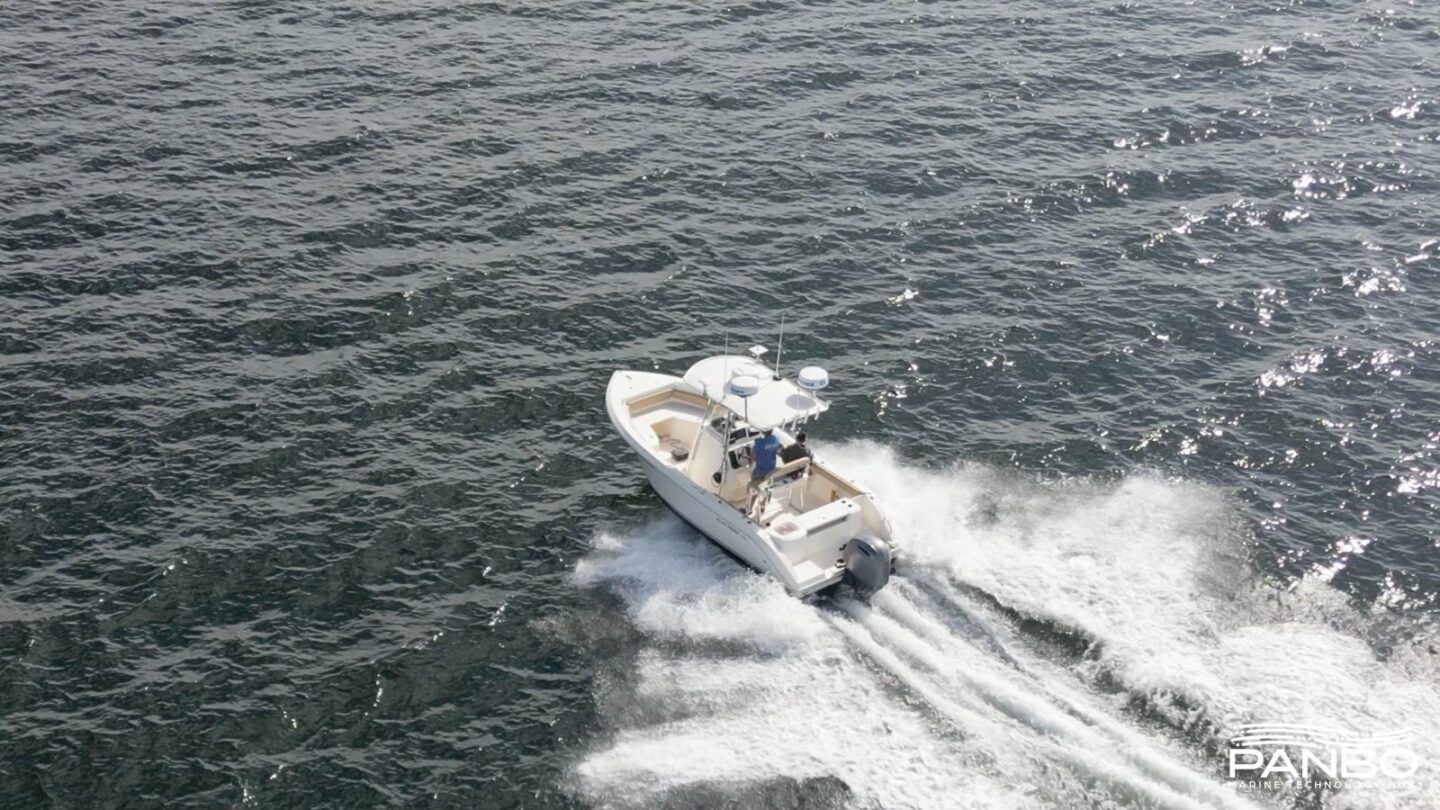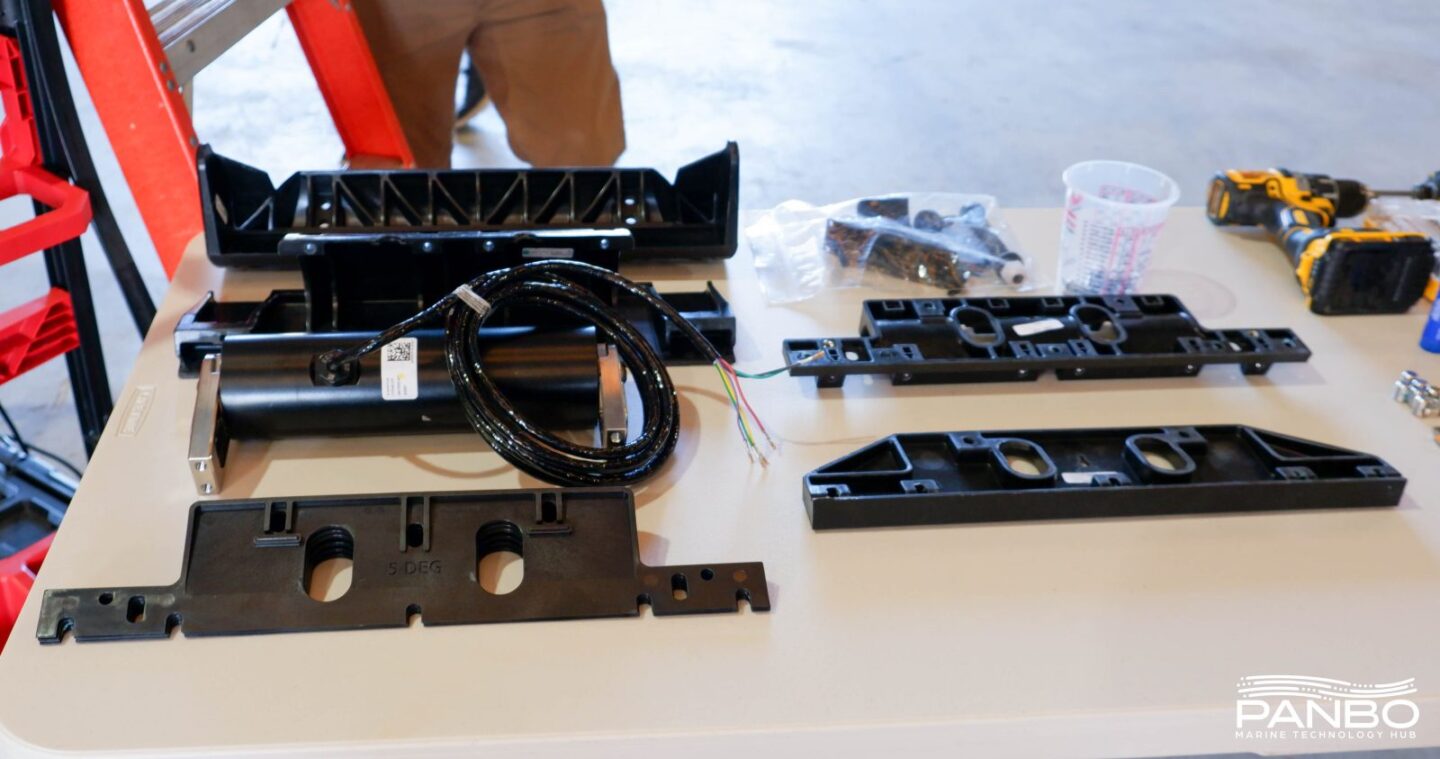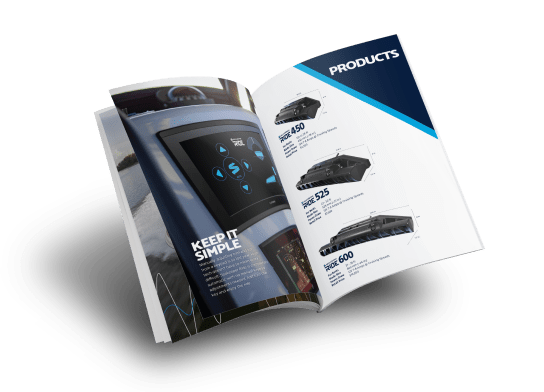Media Coverage
Panbo tests Seakeepeer Ride
It’s been almost six months since Seakeeper completed the installation of their new Ride attitude control system on Panbo(at). Since then, I’ve spent quite a few hours on the water using the new system and getting a feel for what it can and can’t do. So, please, read on and see what I’ve discovered about the system, how it’s improved the ride of Panbo(at) and how it might pair with a stabilizing gyro as well.
In my mind, and I suspect many other boaters’ minds, the Seakeeper name is synonymous with the unmistakable impact their stabilizing gyroscopes make on a boat’s roll. As many Panbo readers are likely aware, I had a Seakeeper 9 gyro on Have Another Day. I felt that the unit changed the ride and performance of that boat enough to justify the nearly six-figure price tag the system carried. So, when Seakeeper announced Ride, their new “Vessel Attitude Control System,” I was immediately anxious to see Ride would have the same impact their gyros do.
The System
Although it doesn’t tell the whole story, Seakeeper Ride is best compared to existing trim tab systems. Those tabs might be traditional horizontal planes or the more recent, but increasingly popular, vertical interceptors. In fact, Ride replaced a set of Zipwake interceptors on Panbo(at). But, Ride’s in water units are neither planes nor interceptors. Seakeeper calls them rotary-deployment controllers. The controller’s blades tip down into the water by rotating the outer portion of the assembly.

Each Ride system consists of two controllers, a distribution module mounted in the stern, and the software module, typically mounted under the helm. The software module connects to an MFD to provide the user interface. On Panbo(at) the software module is currently connected to a Garmin GPSMap 943 XSV, but it could also connect to the Raymarine Axiom 9+ or Simrad NSX on the boat.
Ride controllers are available in three sizes measured by the width of the blade, to cover boats from 19 to 35 feet. Although at launch only non-stepped hulls were supported, Seakeeper has since gathered enough data to also install on stepped hulls. Currently, single and twin-engine boats are supported. (12/14/23- Seakeeper let me know they’ve removed engine restrictions, now it’s just a question of room on the transom) Seakeeper offers three sizes of blades: 450mm for boats up to 26 feet for $4,500, 525mm for boats 27 to 30 feet for $7,500, and 600mm for boats 31 to 35 feet for $10,500.
The magic of Ride comes from the speed with which the in-water unit adjusts and dips itself into the flow of water passing underneath it. The full extension of a blade is only 1 inch into the water, but Ride adjusts deployment 100 times per second.
How does Seakeeper achieve its impressive results? Speed. Speed of deployment, speed of the processing, and speed of the adjustment commands. To turn those commands into action, they utilize large motors to move the blades. The motor alone on a Ride controller weighs around 10 pounds. Just look at the size of it compared to the Zipwake motor above. The motor in a Zipwake system is centered on the top of the housing. Now consider that Ride makes up to 100 adjustments per second to control the motion of the boat.
Ride’s contoller mechanisms are glued to the stern of the boat using Plexus or a similar structural adhesive. My gyro was also glued in place on Have Another Day. I vividly recall my skepticism upon initially learning that an 800-pound gyro spinning at 9,000 RPMs was going to be glued to my boat. But, well over a thousand operational hours and extensive witness marks told the tail of no movement and great security. So, I was much less concerned when I saw this system would also be glued in place.

Once the controllers are installed on the transom, the distribution module gets wired to the control module under the helm. The control module connects to a compatible MFD via Ethernet to allow the system to be controlled from the MFD. On Panbo(at), that MFD is a Garmin GPSMap 943XSV and the interface is rendered via Garmin’s OneHelm.
Performance on the Water
Although I’m quite familiar with Seakeeper’s gyros, prior to the installation on my boat, I had never been on a Ride equipped boat. So, it was with baited breath I awaited my first time on the water after the install. Naturally, that ride came the day after the installation was completed so the adhesives securing the Ride controller to the boat had time to cure. And cure the adhesive did, the controllers feel like they’re part of the hull and I don’t imagine they’re coming off anytime soon; well, I hope they aren’t.
As I mentioned, Panbo(at) has had Zipwake installed for several years and I have six years of running Have Another Day with a Seakeeper gyro. Plus, I’ve run several fin-stabilized boats and countless boats with traditional plane-based trim tabs. So, I have experience with various boat control systems but, Ride works differently than anything I’ve run before.
Ride and gyros complement each other
You might think Seakeeper is in danger of cannibalizing their sales of Seakeeper 1, 2, and 3 gyro units with Ride. Especially since Ride is a good bit cheaper than a gyro. But, the reality is Ride and a gyro are nearly perfect complements. Gyros work best at rest and get less effective the faster the boat gets. Ride doesn’t work at all at rest and gets more effective the faster the boat gets. Plus, gyros can only influence side-to-side rocking, not fore-and-aft pitching. Ride can control both pitch and roll.
Smoothing out the bumps
That first test was a kind of snotty day on the Caloosahatchee River. Although we were more than 10 miles upriver from the Gulf, we found plenty of sharp chop to see what Ride could do. As soon as we engaged Ride, the first thing I noticed was a softening of the boat’s ride. I’ll struggle to describe the sensation, but effectively it just feels like the boat isn’t hitting as hard. The chop on the river was sharp and short so it’s punctuated by lots of impacts from the hull slapping the face of the waves. With Ride enabled, that slap is reduced. It feels like Ride is lifting the bow up a little at just the right moment to dampen the impact.
After the positive results on the river, the next test was more open water. So, on a gray, blustery day Panbo(at) made its way down the river to the south side of Sanibel and the open waters of the Gulf of Mexico. Here, we found bigger, confused seas with a ground swell in addition to wind-driven chop. Ride performed as admirably in these conditions as it did up the river. Again, I found myself impressed at the softening of the ride. My knees knew the difference between when Ride was enabled and when it was disabled. Disabled, I felt the full hit of each wave. Enabled, my eyes told me a big hit was coming but it never arrived.
Although Ride influences both pitch and roll, I feel its greatest impact is on pitch control. Ride doesn’t start working until the boat is travelling over ten miles per hour. At speeds above 10 mph, Panbo(at) is basically on plane, and planing it has good roll stability. While I noticed and appreciated the job Ride does to flatten the ride, I feel the magic is in controlling pitch and with that, softening the ride.
I’ve struggled for ways to quantify the difference in performance in rougher conditions. The best summary I can provide is to say that Ride makes my 3,000-pound, 22-foot boat feel both bigger and heavier. The boat feels safer and more controlled in rough conditions. The video above shows a recent day testing Ride in the Gulf. The waves didn’t live up to the forecast so I wasn’t able to get as dramatic footage as I might have liked. However, those calmer conditions may also be the difference between my coming home with or without the drone. Landing a drone on a pitching boat deck isn’t the easiest!
Handling Improvements
When I purchased it, Panbo(at) was a single-engine boat without any tabs. So, it had a tendency to roll to port as a result of prop torque. As soon as Ride is allowed to run in automatic mode, it immediately corrects the list. It happens fast enough and consistently enough that one quickly forgets Ride is taking care of it. But, as soon as I set Ride to manual, I’m reminded of the work it’s doing. The video above shows the angled view of the world with Ride off.
Another advantage of Ride is the work the system does to improve turns. My experience with Zipwake was that I sometimes felt like the system was working against my turns. I attributed this to the system being set up to try and hold the boat flat. The work the system did holding the boat flat made the stern feel like it wanted to step out of a tight turn. In contrast, Ride feels as though it’s digging into turns, holding the stern in, and leaning the boat into turns. It’s a smooth feeling and again one of control. That control is especially noticeable in rough conditions when making large turns. I can’t begin to figure out all the movements of the blades to enhance both ride and turn performance at the same time. But, I can speak to the results and they’re impressive.
Seakeeper strives for Ride to be a system you don’t think about. Along those lines, although they offer an on/off dash-mounted control, they prefer no new Seakeeper hardware on the dash. Instead, you can go to your MFD if you need to adjust the system. But, the expectation is those adjustments will be minimal and the system will just work. I’ve found that to be exactly what happens. However, I had an issue with a clip not holding the power cable in snuggly. As a result, it slipped out a few times and shut the system down. The system was effective enough that it took only a minute of running for me to realize the boat felt different and I was missing the performance I’d come to expect.
Effect on speed
One of the FAQs in the Ride promotional materials asks about the effect of Ride on speed. Seakeeper acknowledges that Ride does create drag and hence could result in some speed decreases. As you may notice in the video above showing roll correction, Ride does tend to slow the boat down a little. In my time on the water, I’ve mostly seen speed reductions from 0.5 to 2.5 mph. Given the improved ride experience, I feel that’s a speed price worth paying.
Software makes the difference
It’s subtle, but the blade is constantly moving up and down
As I learned with my Seakeeper gyro, Seakeeper delivers a complete solution. They weren’t the first company to use a gyroscope to stabilize a boat and they aren’t the first company to use devices on the stern of a boat to control the ride through lift. But, the secret to their success and the user experience is their software. In Ride’s case it’s the complete package. The package starts with the hardware including the large motors controlling the blades and continues to the control unit and inertial measurement unit (IMU) that senses the boats’ movements. The hardware is paired with software that understands the IMUs output and the boats’ operation to make up to 100 corrections per second. The result is a system that feels like it’s predicting the future as it adjusts for sea conditions as the boat hits them.
Final thoughts
I’ve been out a few times in conditions that made me very happy to have Ride. For the sake of comparison, I turned the system off in some of the roughest conditions. I quickly found myself reaching for the MFD to turn it back on. I’d say Ride makes all conditions more comfortable and can enhance the boat’s ability to handle rough conditions. For its cost, I think that makes Ride a great upgrade!

